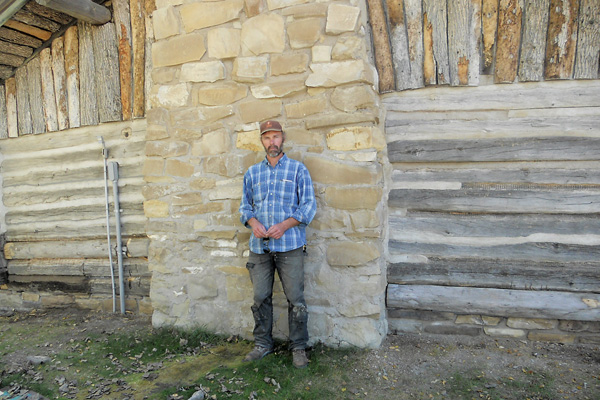 Gary Barker could tell you how old log cabins fall apart. He had spent a decade as a YMCA camp caretaker in Minnesota, using best guesses, luck and determination to keep the buildings in working order.
Gary Barker could tell you how old log cabins fall apart. He had spent a decade as a YMCA camp caretaker in Minnesota, using best guesses, luck and determination to keep the buildings in working order.
But in 2002, a friend told him about a Clearwater County Historical Society workshop that taught people how to restore log cabins from the 1800s. Barker jumped at the opportunity to participate.
“We learned on a one-room school building from the 1880s,” he says. “It was in really bad shape, and most people would have walked away from it. But I learned everything is possible.”
Realizing that log cabin restoration rang his bells, he went back to YMCA Camp Warren with new skills and vigor to get those cabins in shape.
When he moved to Bismarck, he got an offer to restore an old cabin in North Dakota. He realized lots of opportunities were all around him: “You can see everything here on this flat prairie,” he remembers thinking. “Those cabins really stand out. I want to restore them all.”
One cabin that caught his eye was at the Dakota Territorial Museum in Yankton, South Dakota. “The Hovden cabin was donated to us and had been moved five times, when it never was meant to move once,” museum director Crystal Nelson says. “It needed a lot of work.”
This square, 16-foot-by-16-foot cabin—built in the 1870s and inhabited until the 1950s—provides an inside look at the Scandinavian immigrants who helped populate Dakota Territory. It was built by Mathias and Agnethe Hovden, who raised four children there. In an 1882 family letter, Mathias told his brother in Norway he had 26 cows, four horses, 10 sheep, one pig, six “little pigs,” 64 hens and three tame doves.
In the 1980s, the Hovden family considered tearing down the cabin. To save it, Everette and Babe McChristy of Volin started a chain of events that saw the cabin move five times, before it ended up at the museum in 2006.
That’s where Barker found it, and the museum found him. “You’d expect most people would come in with an army of equipment,” Nelson says, “but Gary came in with a sharpened axe and hand saws.”
Barker admits he did use a chain saw occasionally, but he doesn’t like the marks it leaves. “On these old cabins, you can still see the axe marks, and I love to see that. You can’t really find power tools to replace the old hand tools,” he says. “I use broad axes that are flat on one side—you can square the timbers with it.”
Yet Barker needed help. He was accustomed to restoring lightweight cedar-log cabins, but the Hovden cabin was made from Missouri River cottonwoods; its long logs weighed as much as 400 pounds.
Manpower came from the Yankton Federal Prison Camp’s inmates who assist in community service projects. “So many things around this town get done because of that wonderful program,” Nelson says.
Barker tried to keep as many of the original logs as possible, but when he couldn’t, he turned to the same source that Mathias Hovden had used more than 140 years ago—the Missouri River cottonwoods.
The museum is pleased with the restoration, Nelson says. As for Barker, the Hovden cabin was just one more notch on his axe. “I like Western history,” he says. “My mission is to restore as many pioneer buildings as I can.”
Jana Bommersbach has been Arizona’s Journalist of the Year and has won an Emmy and two Lifetime Achievement Awards. She is the author of two nationally-acclaimed true crime books and a member of Women Writing the West.






